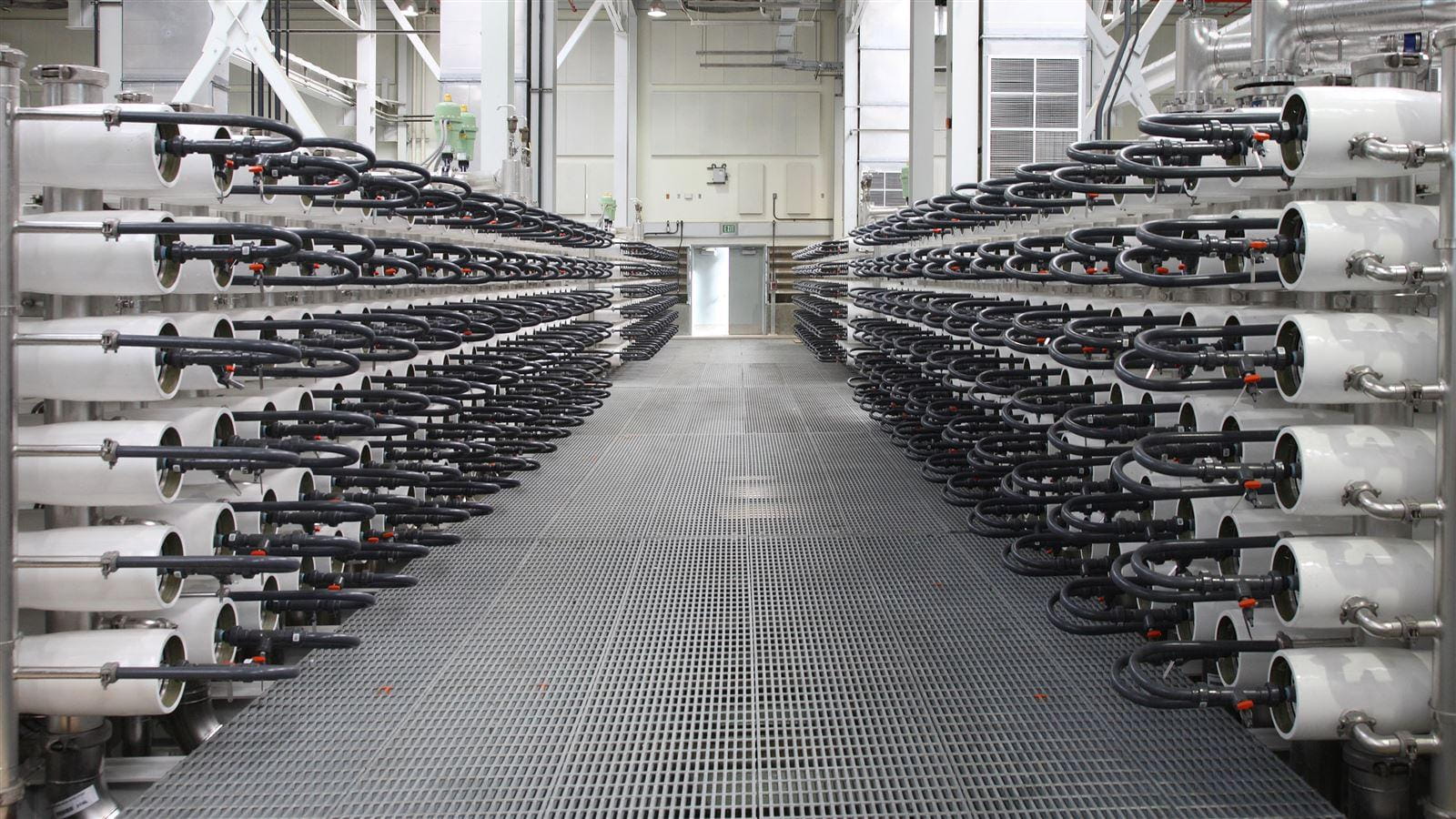Implementing Reverse Osmosis for Seawater and Brackish Groundwater Desalination
This article has been adapted from “The Rise of Desalination: Solving Water Quality and Supply Issues Through Reverse Osmosis,” a recent webinar from CDM Smith featuring the expertise of Matthew Trzcinski, P.E.. Stream the full webinar here and earn a PDH for attending.
Around the United States, freshwater supplies are being depleted due to over-pumping fresh groundwater resources, saltwater intrusion, population migration and climate change. These impacts have been felt from southern California to the Gulf Coast and beyond. As communities look to expand water supply portfolios, new sources are needed, including saltwater sources. In addition to the seawater along the thousands of miles of U.S. coastline, brackish groundwater is abundant throughout the U.S. Treating this water requires desalination technology, generally through reverse osmosis (RO).

Nanofiltration is a loose, low pressure RO membrane. It provides the poorest rejection of all the RO membranes but also operates at the lowest pressures. Nano filtration membranes are typically used for softening. They are also used to remove higher molecular weight PFAS compounds.
Brackish water RO membranes reject salts better than the nanofiltration membranes but operate at higher pressures. Brackish water membranes are used in a wide variety of applications including potable water production, process and high purity, water, makeup, municipal and industrial re-use and pharmaceutical applications.
Seawater RO membranes provide the highest salt rejection but also operate at the highest pressures and are mainly used for potable water production and industrial process water.
Specialized membranes are also available most, notably, high sulfate rejection, membrane used predominantly in the upstream oil and gas industry where the presence of sulfate is not desirable but maintaining a high salinity level is.
Implementing these reverse osmosis technologies on a project requires careful consideration of a number of factors, which are described below.
Critical Success Factors
Critical Success Factors
Planning pays dividends. Implementing a reverse osmosis project has its own challenges and planning for these challenges will result in a such a successful project:
- Identify and begin the permitting process for brine management; this needs to be addressed early
- A contracting methodology is also important on a typical design bid build project. You may end up with a general contractor that has never constructed or commissioned a reverse osmosis system before.
- Begin implementation of lessons learned early on; the owner, engineer, and contractor should all be applying their lessons learned to the project
At the concept selection/basis of design stage:
- Understand energy use and efficiency; coordinate with the local power company early on
- Begin hiring and training staff members to better understand the nuances and complexities of RO projects
Source Water Considerations
It is important to understand your source water. Source water contaminants can impact the reverse osmosis process; surface water tends to have more biological activity while groundwater has higher constituents that create sparingly soluble salts including barium, sulfate, and strontium.
Surface water considerations include:
- Plankton, algae
- Virus, bacteria
- Dissolve, Total Organic Carbon (TOC)
- Suspended solids
Well water considerations include:
- Under the influence of surface water: Similar to surface waters but reduced suspended solids
- Confined aquifer: Sparingly soluble salts, silica, iron
Pretreatment
Pretreatment is always necessary regardless of the water source. Typical foulants include dissolved solids that can precipitate under high concentrations, suspended solids such as sand and silt, organic material both dissolved and suspended, colloidal material both natural and a carryover from a pretreatment process, and biological material including bacteria, plankton and algae.
Pretreatment for ground water usually includes:
- Sand strainer
- Antiscalant (scale inhibitor)
- pH suppression (acid addition)
- Cartridge filter (for incidental suspended solids removal)
- Oxidation/filtration for iron removal
Pretreatment Alternatives
When selecting a pretreatment alternative, utilities must understand their source water quality by sampling at various depths and over periods of time. There are also considerations that should be taken regarding design decisions:
- Is iron present? And is oxidation or filtration required?
- Is filtration needed for suspended solids? Membrane or media?
- Is dissolved air filtration (DAF) or clarifier needed prior to filtration?
- How will we manage solids from the clarification and filtration processes?
Pretreatment Filtration Alternatives
There are two different pretreatment alternatives that can be utilized. Each comes with their own advantages and disadvantages:

Typical Seawater Pretreatment Alternatives
The image below reflected a RO pilot study in California, but there are several configurations possible depending on the raw seawater characteristics. There were two different types of UF that were investigated for this project, as well as two media filters and a DAF system. Usually, when there is a media filter there needs to be a DAF system included with it. If the water has high algae content, the DAF will to be in front of a UF system. The filters serve as an insurance policy. Downstream of this is the seawater RO process with an energy recovery device.
The success of a reverse osmosis project for water desalination hinges on meticulous planning, strategic considerations, and effective implementation of critical success factors. To learn more about RO applications and process design considerations, watch The Rise of Desalination or contact one of our desalination experts for more information.











